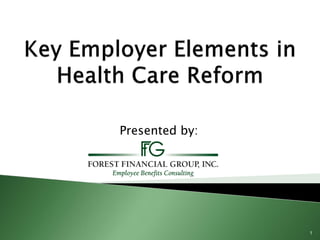The document summarizes key provisions of the 2010 health care reform legislation that affect employers, including requirements regarding lifetime and annual limits on coverage, dependent coverage for children up to age 26, uniform explanations of coverage, reporting on quality of care, and appeals processes. The reforms impose new regulations on employer-provided health plans with respect to benefits and administration.

























































